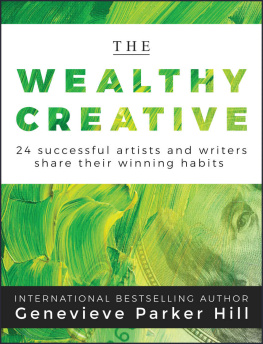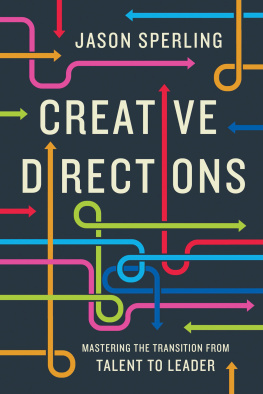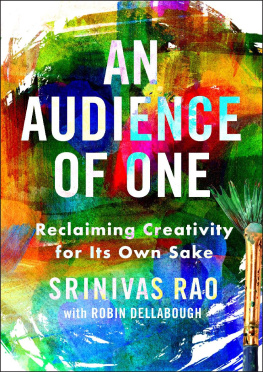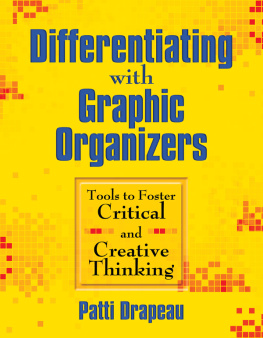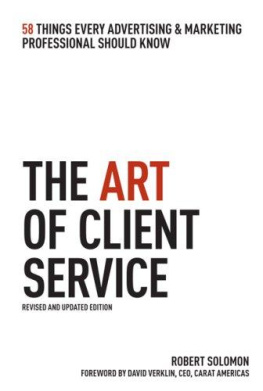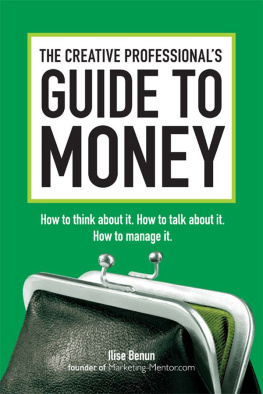
Dear Client,
This book will teach you how to get what you want from creative people.
Sincerely,
Bonnie Siegler

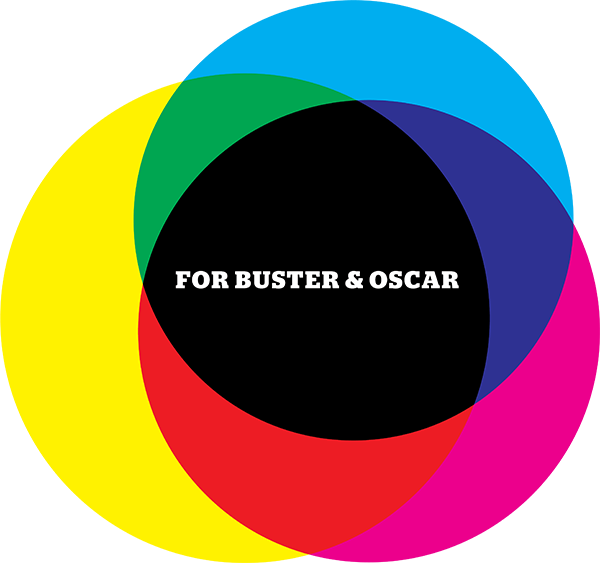
for buster & oscar
It doesnt make sense to hire smart people and then tell them what to do; we hire smart people so they can tell us what to do.
Steve Jobs
To design is much more than simply to assemble, to order, or even to edit; it is to add value and meaning, to illuminate, to simplify, to clarify, to dramatize, to persuade, and perhaps even to amuse.
Paul Rand
There are three ways to ultimate success: The first is to be kind. The second way is to be kind. The third way is to be kind.
Mr. Rogers
INTRODUCTION
When my first graphic design company, Number 17, was only five years old, Oprah Winfrey (!) hired us to design a book dear to her heart. Journey to Beloved combined the diary she kept while making the movie Beloved with beautiful photographs from the film shoot. We began the design with trepidation: Honestly, her passion for the book was a huge red flag. Past experiences had taught us that it could be difficult for clients to hear objective opinions from consultants when a project had such deep personal meaning. Plus, there was Oprahs reputation as a demanding perfectionist with enough money to get whatever she wanted.
When we sent her our first pass of the book design, we assumed it would be rejected out of hand or covered with Post-it notes demanding changes without any diplomatic explanation. We waited anxiously for her assistant to call and say, Please hold for Oprah or to pass on to us what Oprah thought. Imagine our joy and surprise when Oprah called us herself. It got better: Instead of telling us what to do next, she asked questions about our creative choices. She listened to the answers, and a dialogue ensued. She accepted some of our choices after hearing our explanation and disagreed with others. But because she gave us the opportunity to make our caseand had the opportunity to make hersthe project and our relationship flourished. The book garnered glowing reviews. Most important, Oprah felt that it expressed what she wanted it to, and she cherished the final product. As did we.
If Oprah was an unexpected dream client, another high-profile celebrity (who shall remain nameless) was our nominee for Bad Client of the Year. The review process began with her telling us she loved the direction, but the next day we received a call from someone who worked for her telling us that the celebrity didnt really like what we had done and didnt really know why. She also asked us to retouch photographs she had supplied in impossible ways.
Worse, instead of providing feedback we could use to design a second pass, she literally cut up our design and taped it together the way she thought it should look, which made for a mess. We were hamstrung, not to mention tongue-tied. Because it was our job, we continued. We took the elements of her pasteup that we could use and changed things that didnt make sense. Such demands increased the budget, lengthened the schedule, and produced cursing and unhappy people on all sides. After a process this fraught, its a small miracle that the project turned out as well as it did.
Which kind of client would you like to be?
Whenever designers get together, we complain about difficult clients. Weve all had them. Relationships that began with optimism and promise descended into bad feelings. Egos and insecurities are powerful negative forces. Some clients who want to appear smart confuse asking questions with appearing stupid. Or they think they should already know the answers. Others believe that since we work for them, were simply obligated to just do what they want even when we think it is wrong. Still others dont understand the mysteries of the creative process, whether that of architecture, design, copywriting, or a host of other professions that are literally more art than science. All such thinking undermines the creative process and eliminates the opportunity for us to bring our strengths into play.
At the same time, we love our clients. And, of course, we need our clients. You allow us to do the work we adore. A fine artist loves a blank piece of paper with the freedom to do anything. Commercial artists (an old-fashioned term, I know) love a creative brief. I have now owned my own company for twenty-five years, although today it is called Eight and a Half after I split (amicably) with my partner at Number 17 a few years back. (Doesnt the name of my company make sense now?) I still love what I do, all of it: the process, the chaos, the anxiety, and the desire and opportunity to make something great. Sometimes it seems as if we care about the end product more than the client, who may just want the project to be completed. But we often get the most pleasure from obsessing about details that you might not even notice. Of course, I know we can be annoying... stubborn... irreverent... emotional... the list goes on. We understand the impulse some clients surely must have to wish they could just do it themselves so they wouldnt have to deal with us.
But you need us as much as we need you. The creative process is not just a matter of giving an assignment and getting a result. There are many phases. Every aspect of the journey needs care and attention. And any collaboration is only as good as the relationships, which take work. I realized long ago that my difficult clients werent assholes or jerks or stupid. They simply dont know how to work with creative people, and that disconnect consistently leads to frustrations.
Thats the topic of this book, the idea for which arose not long after I decided it was time to stop complaining. As Atticus Finch said, You never really understand a person until you consider things from his point of view.
Ironically, there are many books for designers about how we can better work with clients, which are useful. Most of us want to understand you, so we can improve the process. But, as far as I know, there are no books to help clients better work with creative people, who are a unique species with a unique language and not-so-unique insecurities. Knowing their language and understanding how to talk about subjective concepts is sort of like preparing for foreign travel: You wouldnt go to Tokyo without learning a few words of Japanese. Youd want to be sure you were ordering a dish you could eat and would be able to get back to your hotel without getting lost. This book is meant to make sure you dont get lost in design translation.
I wrote Dear Client to teach you how to interact with the creative professional. I approached it from a graphic designers perspective, but I believe the lessons are applicable to most creative collaborations. I am also writing as a small-business owner. My clients range from entertainment organizations (Saturday Night Live) to government entities (the National September 11 Memorial & Museum at the World Trade Center) to Fortune 500 companies (Scotts Miracle-Gro). We are, essentially, a client services company. As such, my goal is to help any client whos ever felt unsure or uneasy with a creative professional feel less conflict, less anxiety, and more joy.
After all, we are on the same side! We want the same thing! And it should be fun! Working with creatives really can be the best part of your day. Figuring out how to create better logos or make your dream kitchen or reinvent your website should be exciting. Together, we are making something out of nothing or improving something that wasnt working. Isnt that more enjoyable than most of your other tasks? Why not bring joy and gratitude to the process?
Next page

